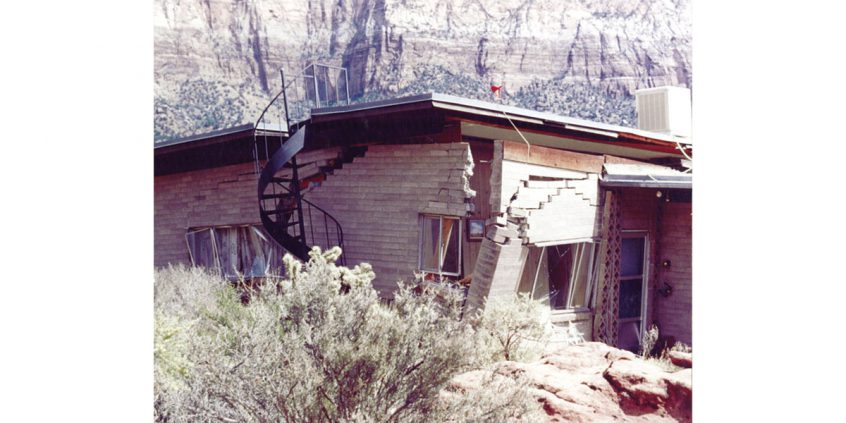SALT LAKE CITY – While earthquakes are inevitable, the damage they cause is not. Utah homeowners can take simple actions to reduce property damage and the disruption to their lives caused by earthquakes.
One of the best non-structural measures you can undertake is strapping down your water heater. An earthquake-damaged water heater can cause fires, flooding, and carbon monoxide build-up (from gas-fired heaters) in the home. A protected water heater can be used as an emergency water source in cases where the disaster has knocked out local utilities.
The water heater should be braced to adjacent walls and equipped with flexible water and gas lines. Restraining or bracing water heaters is relatively easy and inexpensive, with strapping kits available at many hardware stores or online.
Another step that homeowners can take is making sure that bookshelves, cabinets, light fixtures, large picture frames and other heavy decorations are properly secured to the wall. This potential earthquake safety risk can be solved at little or no cost.


Before starting major retrofit work, homeowners are strongly advised to contact their local city or county building department to see if special permits are required.
Some modifications around the house might require a licensed contractor, engineer, or architect. You can browse a list of Utah-based companies at https://secure.utah.gov/datarequest/professionals/index.html or check their licenses at https://secure.utah.gov/llv/search/index.html.
Looking at the bigger picture, there is no such thing as totally “earthquake proof.”
Even buildings designed to the latest building codes can be damaged. Which means that Utah buildings that didn’t get damaged during the Magna Quake and its aftershocks could still be vulnerable to future earthquakes.
Earthquake damage isn’t covered by a standard homeowner’s residential or fire insurance policy. So in addition to strengthening your house and securing non-structural hazards within your home, earthquake insurance should be considered. Contact your insurance agent for a quote.
FEMA and the state of Utah have several publications explaining rebuilding and retrofitting options and other earthquake preparedness actions. To learn about these and for other tips or to ask questions about mitigation, email FEMA-R8-HMhelp@fema.dhs.gov.
Utah residents impacted by the earthquake and aftershocks of March 18 through April 17 who have not registered with FEMA can still apply for assistance at www.DisasterAssistance.gov or by calling the FEMA Helpline at 800-621-3362 (FEMA) or (TTY) 800-462-7585. Help is available in most languages.
If you require a reasonable accommodation or an alternative format of available information such as American Sign Language format, or audio format, please submit your request to: Region8AccommodationRequest@fema.dhs.gov.
For more information on Utah’s recovery from the Magna Quake, visit, www.fema.gov/disaster/4548, or https://earthquakes.utah.gov/magna-quake/.
###
FEMA’s mission is helping people before, during, and after disasters.

